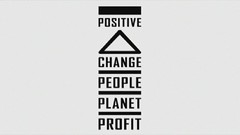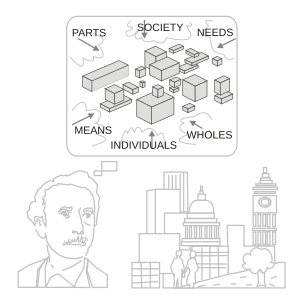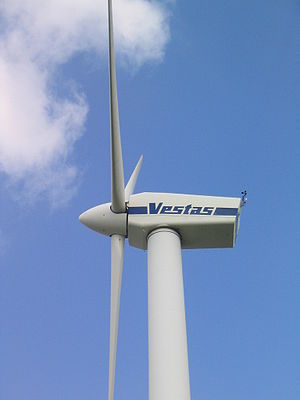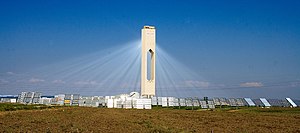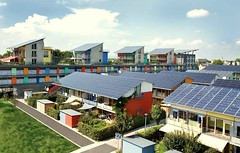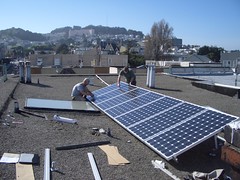 Image via Wikipedia
Image via WikipediaBy
Mike Nemeth
California's San Joaquin Valley is courting the renewable energy industry with all the finesse of hillbilly Lil Abner trying to entice a partner at an upscale waltz. He's got the chops, but those combat boots.
Firebaugh may prove to be the Valley's Love Potion No. 9. The tiny west-side community of 7,000 hasn't let its rural character and farm field sentiments get in its way as it seeks to attract its share of perhaps the biggest potential energy development prize of the coming decade.
So far, it's got two sectors - solar and biofuel - in the wings and is pursuing sustainability and a regional clean energy leadership with vigor and, more importantly, real finesse.
Littleton, Colo.-based SolarGenUSA has leased a 52-acre parcel from the city for a 5 megawatt solar installation. The company's web site says the project has been permitted.
In addition, there's talk of a Seattle-based company looking to contract for 40,000 to 60,000 acres so it can plant an obscure but desert-loving plant that's part of the mustard family. The crop, camelina, may be emerging as a front-runner in the effort to develop a viable source of biofuel, writes Harry Cline of Western Farm Press.
This and enterprise on the part of its leaders makes Firebaugh potential ground zero for clean energy.
And the drive for clean energy is on its way. Make no mistake. While it appears to be taking its time, the push for more diverse sources of energy - that don't add to carbon dioxide levels in the atmosphere - has begun. And the San Joaquin Valley is attracting attention from solar, wind, biofuel and even geothermal.
Conventional wisdom would argue that those who establish successful operations at the outset of a trend have a strong chance of reaping profit. Kings County to the south also is flexing its sun-soaking muscles with nine solar projects on the books. And the towns of Tulare and Madera also jumped into the mix with solar arrays of their own.
Jobs in clean energy are expected. Their impact is outlined in multiple reports. Scarce now, they could break loose over the next couple of years as initial developers prove project viability. A new report offers a relatively rosy outlook, giving opponents of clean energy the argument that fossil fuels won't be considered "cheap" much longer.
"Costs of clean energy will rapidly decline because renewable energy standards, public investments, and environmental incentives will all spur new production," wrote authors Richard W. Caperton and Adam Hersh of the progressive Washington, D.C.-based think tank Center for American Progress.
Caperton is senior policy analyst on the center's energy opportunity team and Hersh is an economist on the center's economic policy team. They say in the report "Putting America Back to Work with Clean Energy" that the "crossover point" at which the two types of energy - fossil and clean - reach cost parity will be different depending on location and type, "but it is coming quickly."
Caperton and Hersh say investing in green energy will immediately create jobs, lower unemployment and improve the nation's energy system. Opponents argue that approach is simplistic and provide data that shows how costly clean energy can be.
That may be. However, other costs, including foreign policy and climate-related issues, if factored in, could create an altogether different cost-effectiveness ratio.
Separate from that is California's policy requiring utilities to get a third of their power from renewable sources by 2020. That also will drive development.
And there's the federal SunShot Initiative, announced on Feb. 4 by Energy Secretary Steven Chu. The initiative's goal is to reduce the cost of installed solar to about 6 cents per installed kilowatt, about a third of today's price.
The result? DOE says without subsidies this 6-cent statistic "will result in rapid, large-scale adoption of solar electricity across the United States."
Firebaugh intends to be first to the finish line. The city has in its corner City Manager Jose Ramirez, who said sustainability for the farming community is his goal. He has been working with me for the past year and a half to implement an Energy Efficiency and Conservation Block Grant that will pay for about $40,000 in LED street light retrofits.
The American Recovery and Reinvestment Act federal stimulus allocation is just an element of Ramirez's multi-pronged strategy to lower the greenhouse gas footprint of his community and improve its quality of life. Firebaugh also is working with the U.S. Department of Housing and Urban Development through its Sustainable Communities Initiative. The goal of the program is to provide equitable development, planning and development approaches for achieving shared prosperity.
Sustainability can be measured many ways. In terms of energy, the city's moving forward quickly, urging on the solar project and energy efficiency measures. But Ramirez explained that Firebaugh's got greater ambitions. The city's launched an effort to better connect with the free-flowing San Joaquin River. The community began as a ferry crossing when most traffic into the Valley traveled via a much more robust waterway.
Firebaugh also has a significant community garden and is engaged in other projects.
Many other regions of the country are also trying to corner a niche in the clean energy era, if indeed it develops into one.
I'd personally prefer it were sooner than later, just to prove to my wife that it can happen. This comment fits with the Lil Abner reference. I identified with him growing up in rural Alaska. My wife was a princess in my estimation as her father was head of Alaska oil exploration for Arco at the time. She was and still is gorgeous and knows how to act in social situations, whereas I was raised by wolves.
Still, when Lil Abner had a feeling, he was usually right.
Mike Nemeth, project manager of the San Joaquin Valley Clean Energy Organization, spent 24 years working as a newspaperman editing and reporting from Alaska to California. The SJVCEO is a nonprofit dedicated to improving quality of life through increased use of clean and alternative energy. The SJVCEO is based in Fresno, Calif. and works with cities and counties and public and private organizations to demonstrate the benefits of energy efficiency and renewable energy throughout the eight-county region of the San Joaquin Valley. For more information, go to
http://www.sjvcleanenergy.org.
Article Source:
http://EzineArticles.com/?expert=Mike_Nemeth
http://EzineArticles.com/?Tiny-Town-Could-Be-Ground-Zero-For-Clean-Energy&id=6287851
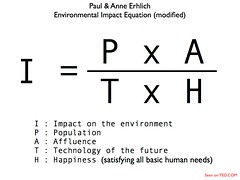 Image by Waleed Alzuhair via FlickrBy Wendy Moyer
Image by Waleed Alzuhair via FlickrBy Wendy Moyer


